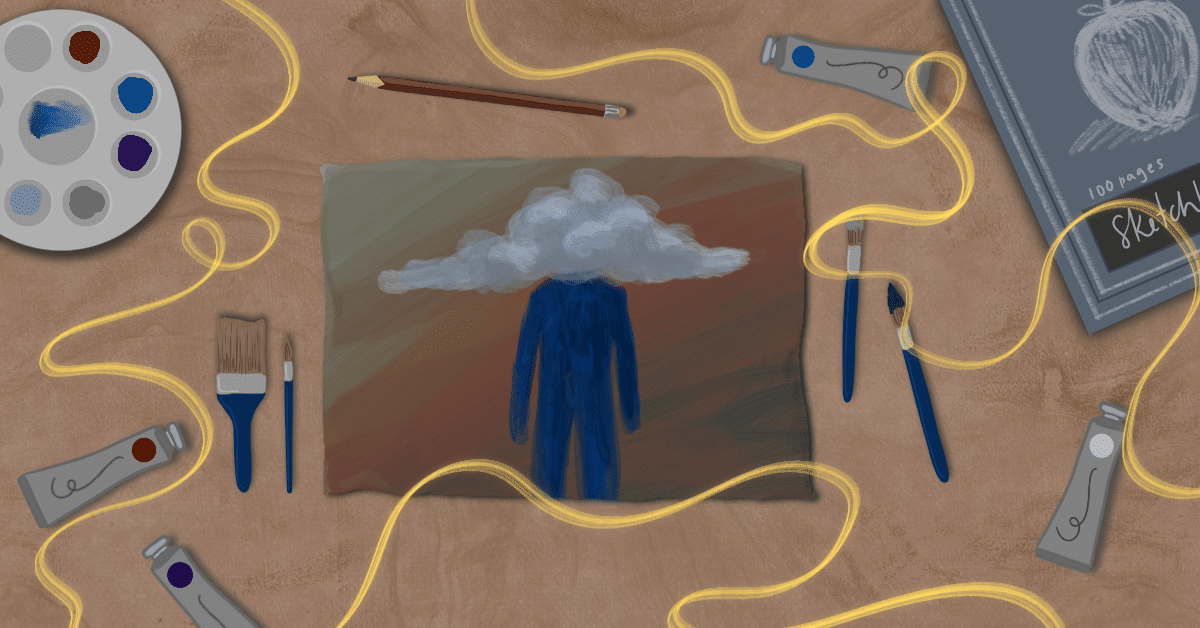Let your freak flag fly—an outlook on art therapy
People have been expressing themselves through art for centuries, and you can too.
When most people hear the term “art therapy,” they might envision a painting circle from a movie, set in the psychiatric wing of some otherwise entirely white hospital. Others might imagine a middle-aged mother of four completing a colouring book filled with linework and paisley patterns. Neither of these ideas are inherently wrong, but they lack the nuance associated with “art therapy.”
Throughout the ages, the practice has split into two branches: art therapy and expressive art therapy. Art therapy is music, paintings, sculptures, dances, and other mediums made entirely for the purpose of evaluation. This aligns with the “painting circle.” In such a session, a psychiatrist might look at your painting and say that you used an excess of red in the foreground because you are feeling a certain way. This type of exercise is used for communication, wherein you might be able to express emotions to your therapist that you couldn’t quite put into words. Your work of art is dissected and analyzed until the complex thoughts behind every choice are laid out in front of you.
Expressive art therapy, on the other hand, is making art for the sake of making art. The purpose is to use the aforementioned art forms to express yourself to a group of your peers without restriction or judgement. While art therapy is meant to help in an evaluation, expressive art therapy is meant to give the creators a voice. When you have something to say but are finding it difficult to express your feelings in words, rather than speaking with a therapist, you express your thoughts to a group of people who are there to listen and share in turn. This is the kind of art therapy that aligns with the “colouring book” example.
The University of Toronto Mississauga (UTM) Career Centre is currently offering expressive art therapy workshops in their Crossroads program. Students are encouraged to attend various events and to express themselves with as little fear of pushback as they can manage. Instructors motivate attendees to be loud and unapologetic—as part of the experience is to listen and share as openly as possible.
Art is an unabashedly human experience. For millennia, we’ve been painting animals on cave walls and trying to capture sunsets on canvases. We’ve been singing songs around campfires and telling moving stories through nothing but a few simple movements across a grand stage. From primitive handprints to the Mona Lisa, art serves but one function: to give the artist a voice. Art lets us say, “I was here. I am just like you.”
You don’t need to speak the same language as an artist to understand the tears they paint on a canvas or to appreciate their smile as they dance. Art builds community. It is an aspect of life filled with self-expression. People speak, people listen, and they become connected in a way that transcends time and space.
The therapeutic use of the arts is slowly being studied. As such, art therapy is gradually becoming more accessible. As with all forms of therapy, art will be ultimately restricted by the number of professionals available to conduct sessions. Expressive art therapy, on the other hand, is only limited by the number of people willing to gather together and make art together. And, as history has proven, art will always be in human nature.
It is up to us to take the next step—to connect with those around us and be unafraid of making noise, no matter what attention it might attract. After all, the noise is only a sign that we are alive, and that we have something to say.

